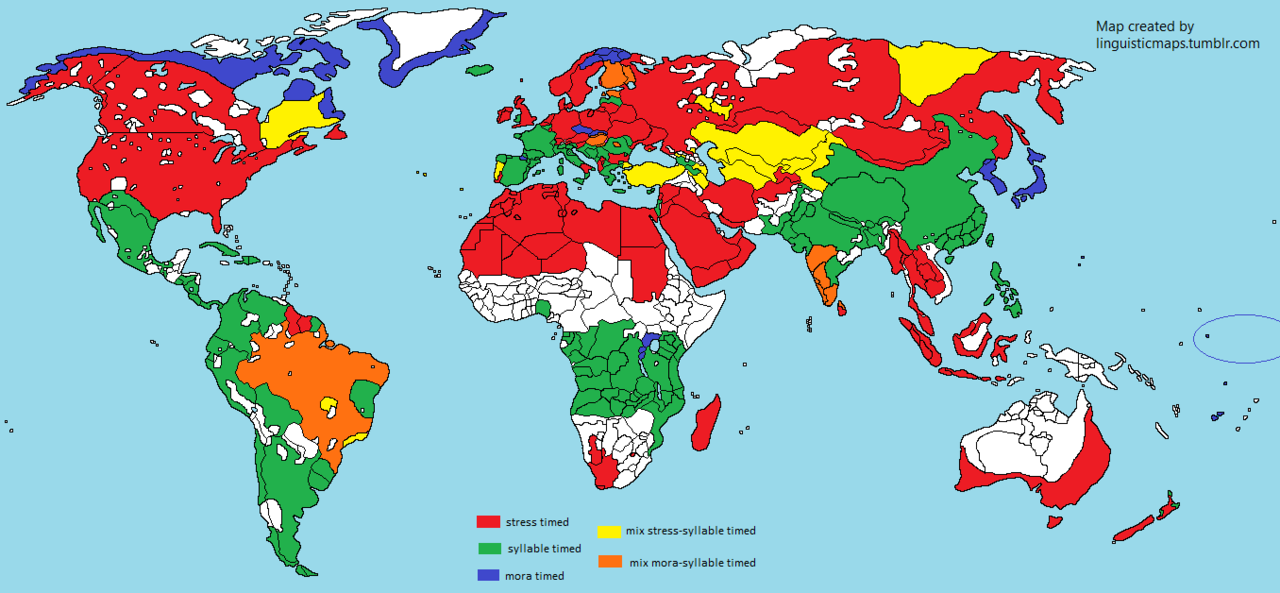
Stress timed - languages usually with strong vowel
reduction, lexical stress, complex syllable structure, a bigger ration of
consonants in relation to vowels. The intervals between stressed syllables are
about even.
Syllable timed - languages usually lacking vowel reduction,
fixed stress or not, simpler syllable structure, more percentage of vowel time.
The time between syllables is about the same.
Mora timed - languages usually with long vowels and
geminate* consonants, simple syllable structure. The time between two moras (a
sub-syllable constituent) is about the same.
Mixed types - have mixed characteristics between two of the
three types above.
*Gemination is the doubling or deliberate lengthening of a consonant sound. It is not common in English, but is found when
the last consonant in a given word and the first consonant in the following
word are the same fricative, nasal, or stop. For instance:
calm man [ˌkɑːmˈmæn]
this saddle [ðɪsˈsædəl]
midday [ˈmɪd.deɪ]
lamppost [ˈlæmp.poʊst] (cf. lamb post, compost)
cattail [ˈkæt.teɪl] (compare consonant length in
"catfish")
roommate [ˈrum.meɪt]
subbasement [ˌsʌbˈbeɪsmənt]
evenness [ˈiːvənnəs]
misspell [ˌmɪsˈspɛl]
prime minister [ˌpraɪmˈmɪnɪstər]
In Japanese, gemination is represented with the sokuon, a
small tsu: っ for hiragana in native words and ッ for katakana in foreign words.
For example, 来た (きた, kita) means "came; arrived", while 切った (きった,
kitta) means "cut; sliced". With the influx of foreign words into
Modern Japanese, voiced consonants have become able to geminate as well: バグ
(bagu) means "(computer) bug", and バッグ (baggu) means "bag".
In some variants of colloquial Modern Japanese, gemination may be applied to
some adjectives and adverbs in order to add emphasis: すごい (sugoi,
"amazing") contrasts with すっごい (suggoi, "really amazing").
No comments:
Post a Comment